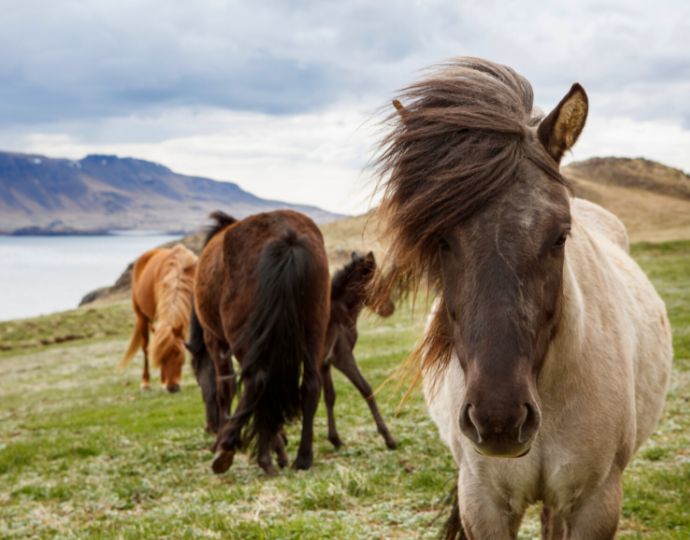When most people think of traveling to Iceland, wildlife is probably not their primary consideration.
Located in the North Atlantic, the remote island is better known for its Viking history, rugged and diverse landscapes, dramatic waterfalls, and rich Icelandic culture.
But while it may not have the polar bears of the Canadian Arctic and Norway or the grizzlies, moose, and other dynamic megafauna you’ll find with Alaskan Animals, watching wildlife is still one of our favorite things to do in Iceland.
Animals in Iceland are basically divided into two main groups, domesticated farm animals and wild animals.
And while there aren’t many endemic Icelandic wildlife species to speak of on land, there are quite a few fascinating introduced species (including the famous Icelandic Horses and a huge herd of Reindeer).
The frigid waters that surround the island’s 3,000+ miles of coastline are teeming with marine life, including numerous species of dolphins, seals, and whales and more than 300 species of fish.
You’ll also find its shores teeming with birds, of which 70 species are known to breed in Iceland and more than 350 have been spotted there.
While we can’t possibly cover all of the Icelandic animals, here’s a look at some of the most interesting species you’re likely to see during your visit if you head into the country’s abundant natural areas.
READ MORE: Birds of Iceland: An Introductory Guide
Animals In Iceland Guide
- Icelandic Horses
- Icelandic Sheep
- Icelandic Sheepdog
- American Mink
- Arctic Foxes
- Reindeer
- Atlantic White-sided Dolphin
- White-beaked Dolphin
- Short-beaked Common Dolphin
- Striped Dolphin
- Bottlenose Dolphin
- Risso’s Dolphin
- Orca
- Harbour Porpoise
- Hooded Seals
- Earless Harp Seal
- Ringed Seal
- Harbor Seal
- Gray Seal
- Bearded Seal
- Fin Whale
- Blue Whale
- Humpback Whale
- Minke Whale
- Sperm Whale
DOMESTICATED ANIMALS OF ICELAND
Icelandic Horses
Arguably among the most popular Iceland animals, Icelandic Horses are a common sight along the Ring Road that visitors use to travel around the country.
Smaller, sturdier, and arguably cuter than other breeds, these pony-sized horses descend from animals brought to Iceland by the Norsemen in the 9th and 10th centuries.
They’re hardy animals built to withstand the rugged climate of winters in Iceland and are relatively disease free. Icelandic law ensures no other horse breeds are allowed to be imported, and any exported animals may not return.
Though they are very…
Click Here to Read the Full Original Article at Green Global Travel…
